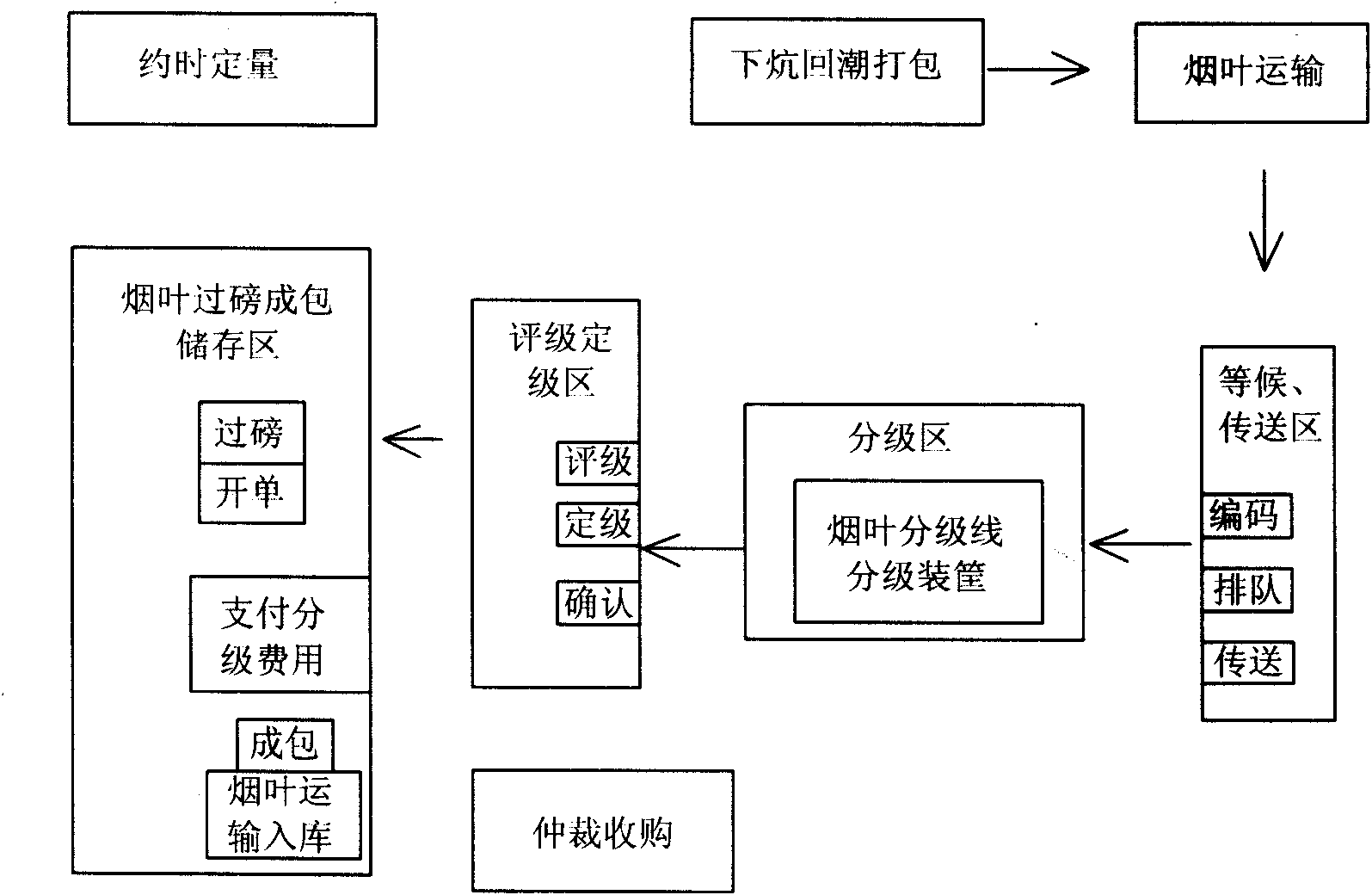Method for grading scattered tobacco leaves on conveyor belt and production line
A grading method and assembly line technology, applied in the fields of tobacco, tobacco preparation, application, etc., can solve the problems of inconsistent internal and external quality, high subjectivity and randomness, and difficult to unify and master the standards.
- Summary
- Abstract
- Description
- Claims
- Application Information
AI Technical Summary
Problems solved by technology
Method used
Image
Examples
Embodiment Construction
[0010] The assembly line grading method of mixed-grade loose tobacco leaves conveying belt described in the present invention is an improvement on the traditional pure manual grading, picking and tying method. It is a method in which professional graders compare graded samples, select a grade specification according to their strict division of labor, and grade and pick tobacco leaves into baskets. The following is a further explanation with reference to the block diagram of the process: Tobacco farmers bake the fresh tobacco produced by themselves and put it on the kang, and after moisture regains the tobacco leaves from crisp to soft, they are packed and sent to the waiting delivery area of the tobacco leaf purchase point, where registration codes, transmission, Enter the isolation and grading area, where the loose tobacco leaves are sent to the mobile grading line, after grading and picking, they are graded and loaded into baskets according to different grades, and then sen...
PUM
 Login to View More
Login to View More Abstract
Description
Claims
Application Information
 Login to View More
Login to View More - R&D
- Intellectual Property
- Life Sciences
- Materials
- Tech Scout
- Unparalleled Data Quality
- Higher Quality Content
- 60% Fewer Hallucinations
Browse by: Latest US Patents, China's latest patents, Technical Efficacy Thesaurus, Application Domain, Technology Topic, Popular Technical Reports.
© 2025 PatSnap. All rights reserved.Legal|Privacy policy|Modern Slavery Act Transparency Statement|Sitemap|About US| Contact US: help@patsnap.com


